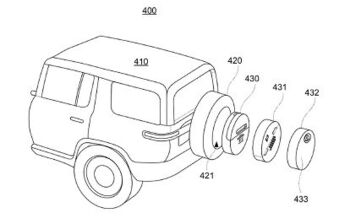Is Your Car Filled With Drugs? No, But the Line Worker Who Built It Might Be

The American automotive industry is facing a problem that has nothing to do with supplier relations or regulatory handicaps. Apparently, domestic auto workers are getting addicted to drugs at an alarming rate. As a Michigan native, my childhood frequently included evenings at the local bowling alley where shop rats would go to tip back a few after the end of their shift. But, with the exception of an occasional “funny smelling cigarette,” you never really heard about anyone having troubles with more illicit substances.
However that’s exactly what the Detroit Three appear to be faced with, according to George Washington, an employee-assistance representative for General Motors. Washington claims line workers are becoming addicted to opioids and even crystal meth at a frequency that’s causing concern.
“It’s not alcohol, it’s not marijuana now. You’re dealing with meth, you’re dealing with the opioids, you’re dealing with the heroin,” Washington, a former addict who started at GM in 1977, told Automotive News in an interview. “It’s starting to show up more and more at the automakers’ doorsteps.”
“[Manufacturers are] going through a transition with all the buyouts and the changing of the guard, which means there is a lot of people retiring … we’re getting a work force now of a lot of younger people who are experiencing different drugs.”
While companies have implemented recovery programs to help workers cope with drug use and mental health issues, most programs aren’t necessarily equipped to handle the challenges associated with severe addition. There is also a different stigma surrounding drugs like meth or heroin and some employees would rather stay silent than risk outing themselves as an addict.
In Flint, Michigan, UAW Local 598 puts on Soberfest — an annual picnic that celebrates plant workers who have overcome substance abuse while also providing resources for those still coping with addiction. Washington is a regular fixture at the event, which is now in its 23rd year.
“This opioid addiction is one of the worst addictions I have ever seen,” Washington said. “It’s so tricky, it’s so powerful. They’ll go in, they’ll get clean. But then when the bottom falls out, it’s one of the most painful I’ve ever seen. They’re suicidal, they feel they’ve let everybody down, they feel they’ve let themselves down. I think it’s a lot more difficult to recover from.”
While younger employees may be at a higher risk for meth use, its the older employees that might end up accidentally addicted to pain killers. The assembly line remains a demanding place and long hours can contribute to injuries that develop over the years. I know of at least two retired GM employees who were prescribed opioids by a physician to cope with back pain late in their careers, which ultimately resulted in dependency.
“They’re doing eight, 11 hours a day,” said Kevin Bush, an employee support representative at Ford’s Louisville Assembly Plant in Kentucky. “Assembly work is very boring, very tedious. That kind of work causes many aches and pains in their body. Maybe they have a pain and the doctor prescribes opioids. And over a period of time the use of that creates a high tolerance and an addiction. And one thing leads to another and it gets worse.”
Unfortunately, a lot of the information surrounding the problem is anecdotal. Everyone knows someone, or someone’s friend, who has had trouble with drugs and who also happened to be employed by an automaker. That’s not enough to definitively call this an epidemic. Some legitimate research needs to be done if the problem is to be addressed in earnest. But we do know that drugs are a problem in the U.S. and making them illegal hasn’t kept addiction or distribution at bay.
The Center for Disease Control cites drug overdoses at the leading cause of unintentional deaths for Americans under the age of 50. Over 64,070 people in the U.S. died from substance abuse in 2016 — representing a 21-percent increase from 2015. The National Center for Health Statistics attributes the majority of those fatalities to opioid usage with 15,446 deaths attributed to heroin, 14,427 to opioid pills and 20,145 from synthetic versions of heroin.
Meanwhile, only 37,461 people died as a result of car accidents, which is currently the second highest cause of accidental death in the United States.
[Image: General Motors]

A staunch consumer advocate tracking industry trends and regulation. Before joining TTAC, Matt spent a decade working for marketing and research firms based in NYC. Clients included several of the world’s largest automakers, global tire brands, and aftermarket part suppliers. Dissatisfied with the corporate world and resentful of having to wear suits everyday, he pivoted to writing about cars. Since then, that man has become an ardent supporter of the right-to-repair movement, been interviewed on the auto industry by national radio broadcasts, driven more rental cars than anyone ever should, participated in amateur rallying events, and received the requisite minimum training as sanctioned by the SCCA. Handy with a wrench, Matt grew up surrounded by Detroit auto workers and managed to get a pizza delivery job before he was legally eligible. He later found himself driving box trucks through Manhattan, guaranteeing future sympathy for actual truckers. He continues to conduct research pertaining to the automotive sector as an independent contractor and has since moved back to his native Michigan, closer to where the cars are born. A contrarian, Matt claims to prefer understeer — stating that front and all-wheel drive vehicles cater best to his driving style.
More by Matt Posky
Latest Car Reviews
Read moreLatest Product Reviews
Read moreRecent Comments
- Probert Maybe it's not too late for the Dodge Neon I've always dreamed of!!! To the keyboard Robin!
- Akear The malibu still outsells all GM EVs combinedMalibu -150,000GM EV's - 75,000Maybe this represents how execrable GM EVs really are. Barra should have resigned years ago,
- Fred Short term bean counters give up the market and long term players gain shares.
- KOKing I thought they quit making it 3yrs ago so... no?
- TheEndlessEnigma Hybrids and PHEVs make sense, EV's do not.


































Comments
Join the conversation
Last month was my 28th anniversary of being a healthcare professional. I remember distinctly when Medicare, Medicaid, and physician/nursing professions began pushing for "pain" to be the fifth vital sign. You wouldn't believe how big a consolidated effort was put forth to institute this measure. When patient satisfaction scores/monetary reimbursement became part of the equation, it was easy to see how this was going to get out of control quickly. And once second, third, and fourth generation analgesics came on board, the push was there to prescribe them. When you combine these medications with the ability to get a 90 day supply at one time (you know, to save money), it is no wonder more and more people are dying of overdoses. Unfortunately, this is a toothpaste is out of the tube scenario.
Just say no!!! Lock them all up!!! Let the prison system deal with there drug use....... Is that what they did to a certain sector people in the 80s What is the difference now..